
|
It brightened up to 11.6 mag in mid October (Oct. 13, Chris Wyatt). It passes the perihelion on Oct. 27. It will not be observable after this. Now it is visible in the SOHO LASCO images.
Date(TT) R.A. (2000) Decl. Delta r Elong. m1 Best Time(A, h)
Oct. 28 13 45.72 -9 4.6 0.956 0.124 6 1.7 4:52 (274,-11)
Nov. 4 14 56.17 -5 10.3 1.226 0.318 11 7.2 18:29 ( 89, -8)
|

|
Now it is bright as 8.3 mag (Oct. 22, Juan Jose Gonzalez). It stays 8 mag within October. In the Northern Hemisphere, it stays observable in excellent condition for a long time. In the Southern Hemisphere, it will never be observable again after this. It started fading before the peirhelion passage.
Date(TT) R.A. (2000) Decl. Delta r Elong. m1 Best Time(A, h)
Oct. 28 4 52.91 65 16.7 0.737 1.510 120 8.6 2:29 (180, 60)
Nov. 4 4 54.91 71 45.9 0.765 1.525 119 8.8 2:04 (180, 53)
|
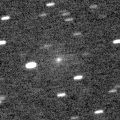
|
Now it is bright as 10.6 mag (Oct. 23, Juan Jose Gonzalez). It stays 10 mag until December. It is observable in good condition in the Northern Hemisphere. It locates very low for a long time in the Southern Hemisphere.
Date(TT) R.A. (2000) Decl. Delta r Elong. m1 Best Time(A, h)
Oct. 28 10 54.23 13 33.7 1.496 1.234 55 11.0 4:52 (280, 37)
Nov. 4 11 22.41 11 32.4 1.477 1.218 54 10.7 4:57 (283, 37)
|
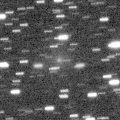
|
Now it is very bright as 10.2 mag (Oct. 23, Juan Jose Gonzalez). It stays 11 mag until winter. It is observable in good condition in the Northern Hemisphere. It locates low in the Southern Hemisphere.
Date(TT) R.A. (2000) Decl. Delta r Elong. m1 Best Time(A, h)
Oct. 28 9 59.96 14 58.2 1.434 1.401 67 11.5 4:52 (288, 48)
Nov. 4 10 24.01 13 42.6 1.398 1.391 68 11.3 4:57 (292, 49)
|

|
It brightened up to 7.1 mag from May to June (June 21, Juan Jose Gonzalez). Now it is fading. It has already faded down to 12.2 mag (Oct. 19, Chris Wyatt). In the Southern Hemisphere, it stays observable for a long time after this. It will never be observable again in the Northern Hemisphere.
Date(TT) R.A. (2000) Decl. Delta r Elong. m1 Best Time(A, h)
Oct. 28 17 41.87 -56 6.2 2.771 2.417 59 11.7 18:35 ( 26,-10)
Nov. 4 18 4.15 -56 36.5 2.880 2.480 56 11.8 18:29 ( 25,-11)
|
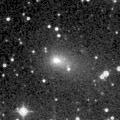
|
Now it is 13.2 mag (Oct. 26, Seiichi Yoshida). It will stay bright as 11 mag for a long time from winter to next spring. In the Southern Hemisphere, it stays observable in good condition until next February. In the Northern Hemispehre, it stays observable for a long time after this until the comet fades out.
Date(TT) R.A. (2000) Decl. Delta r Elong. m1 Best Time(A, h)
Oct. 28 5 32.89 0 6.9 2.586 3.291 127 12.2 3:08 ( 0, 55)
Nov. 4 5 29.20 0 55.4 2.471 3.249 135 12.1 2:37 ( 0, 56)
|

|
Now it is very bright as 11.5 mag (Oct. 22, Juan Jose Gonzalez).
Date(TT) R.A. (2000) Decl. Delta r Elong. m1 Best Time(A, h)
Oct. 28 21 5.35 -14 33.5 5.557 5.812 99 13.5 18:38 ( 0, 41)
Nov. 4 21 6.79 -14 24.6 5.668 5.811 93 13.5 18:29 ( 5, 41)
|
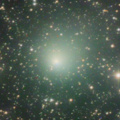
|
It brightened up to 10 mag from spring to summer. Now it is fading. It has already faded down to 12.7 mag (Oct. 26, Seiichi Yoshida). It is observable in excellent condition in the Southern Hemisphere. It locates low in the Northern Hemisphere.
Date(TT) R.A. (2000) Decl. Delta r Elong. m1 Best Time(A, h)
Oct. 28 20 18.72 -30 25.0 1.739 1.934 85 13.5 18:35 ( 10, 24)
Nov. 4 20 34.61 -29 7.2 1.839 1.969 82 13.8 18:29 ( 12, 25)
|

|
It brightened very rapidly from July to August. Now it is very bright as 14.1 mag (Sept. 27, Chris Wyatt). It is observable in excellent condition in the Southern Hemisphere. It stays low for a while in the Northern Hemisphere.
Date(TT) R.A. (2000) Decl. Delta r Elong. m1 Best Time(A, h)
Oct. 28 23 56.74 -34 38.5 1.936 2.613 122 13.9 21:29 ( 0, 21)
Nov. 4 23 53.80 -33 31.0 1.971 2.585 117 13.8 20:58 ( 0, 22)
|
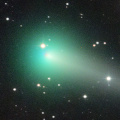
|
It brightened up to 6.2 mag in April (Apr. 7, Juan Jose Gonzalez). Now it is fading rapidly. It has already faded down to 13.8 mag (Sept. 30, Ken Harikae). It stays observable for a long time after this.
Date(TT) R.A. (2000) Decl. Delta r Elong. m1 Best Time(A, h)
Oct. 28 3 25.73 20 9.4 1.766 2.722 160 14.3 1:02 ( 0, 75)
Nov. 4 3 17.72 19 25.9 1.822 2.803 169 14.5 0:26 ( 0, 75)
|
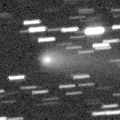
|
It brightened up to 12.2 mag in August (Aug. 21, Juan Jose Gonzalez). It is fading now. It has already faded down to 14.0 mag (Oct. 1, Michael Jager).
Date(TT) R.A. (2000) Decl. Delta r Elong. m1 Best Time(A, h)
Oct. 28 8 9.40 9 58.7 1.419 1.762 92 14.5 4:52 (331, 62)
Nov. 4 8 15.28 9 55.0 1.398 1.818 97 14.6 4:57 (346, 64)
|
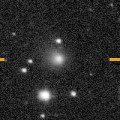
|
Now it is 14.5 mag (Sept. 22, Sandor Szabo). It is expected to brighten up to 10 mag in summer in 2018. In the Northern Hemisphere, it stays observable until 2018 summer while the comet will be brightening. In the Southern Hemisphere, it is hardly observable in 2017, but it will be observable in good condition in 2018.
Date(TT) R.A. (2000) Decl. Delta r Elong. m1 Best Time(A, h)
Oct. 28 17 20.66 21 23.2 4.244 3.816 58 14.6 18:35 ( 89, 40)
Nov. 4 17 25.55 19 34.9 4.252 3.760 54 14.5 18:29 ( 90, 36)
|

|
Now it is 13.7 mag (Sept. 22, Sandor Szabo). It is expected to brighten up to 12 mag from 2018 to 2019. In the Northern Hemisphere, it stays observable in good condition while the comet will be brightening gradually. In the Southern Hemisphere, it is not observable until 2018 October.
Date(TT) R.A. (2000) Decl. Delta r Elong. m1 Best Time(A, h)
Oct. 28 15 4.91 47 23.6 4.146 3.778 61 14.7 18:35 (131, 25)
Nov. 4 15 8.56 47 11.1 4.077 3.731 62 14.6 18:29 (133, 23)
|

|
Now it is 14.2 mag (Sept. 22, Sandor Szabo). It will be observable at 14 mag for a long time from 2017 to 2018. In the Southern Hemisphere, it will be hardly observable after this. It will be extremely low from November to December in the Northern Hemisphere.
Date(TT) R.A. (2000) Decl. Delta r Elong. m1 Best Time(A, h)
Oct. 28 16 9.75 18 56.0 4.522 3.865 43 14.7 18:35 ( 97, 24)
Nov. 4 16 11.64 18 54.0 4.536 3.849 41 14.7 18:29 ( 99, 20)
|
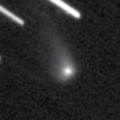
|
Now it is 14.7 mag (Oct. 1, Catalina Sky Survey). It stays observable at 15-16 mag for a long time from 2017 to 2018.
Date(TT) R.A. (2000) Decl. Delta r Elong. m1 Best Time(A, h)
Oct. 28 1 3.91 14 25.6 3.323 4.288 164 14.9 22:35 ( 0, 69)
Nov. 4 0 54.06 12 20.0 3.363 4.282 155 15.0 21:58 ( 0, 67)
|
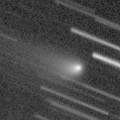
|
Now it is 14.4 mag (Sept. 19, Toshiyuki Takahashi). It will be fading after this.
Date(TT) R.A. (2000) Decl. Delta r Elong. m1 Best Time(A, h)
Oct. 28 19 9.41 -14 58.0 2.925 2.792 72 15.0 18:35 ( 33, 33)
Nov. 4 19 6.65 -15 47.4 3.084 2.809 64 15.1 18:29 ( 39, 30)
|

|
Now it is 14.9 mag (Sept. 26, Alexander Baransky). It brightened rapidly. It is observable at 15 mag in autumn in good condition in the Northern Hemisphere. It locates low in the Southern Hemisphere.
Date(TT) R.A. (2000) Decl. Delta r Elong. m1 Best Time(A, h)
Oct. 28 5 40.56 34 18.8 1.202 1.974 127 15.1 3:16 ( 0, 89)
Nov. 4 5 42.04 35 31.9 1.171 1.991 133 15.0 2:50 (180, 90)
|
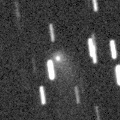
|
Now it is 13.7 mag (Oct. 13, Juan Jose Gonzalez). In the Northern Hemisphere, it stays 15 mag until winter, and it is observable in excellent condition. It is not observable at all after this in the Southern Hemisphere.
Date(TT) R.A. (2000) Decl. Delta r Elong. m1 Best Time(A, h)
Oct. 28 20 4.87 67 9.8 2.874 3.224 101 15.2 18:35 (170, 57)
Nov. 4 19 55.64 65 59.1 2.911 3.233 99 15.3 18:29 (164, 56)
|

|
Now it is 15.3 mag (Sept. 17, Artyom Novichonok). It stays observable at 16 mag unil the end of 2017.
Date(TT) R.A. (2000) Decl. Delta r Elong. m1 Best Time(A, h)
Oct. 28 3 31.99 0 0.6 5.198 6.117 155 15.4 1:08 ( 0, 55)
Nov. 4 3 29.56 -0 20.3 5.207 6.146 159 15.5 0:38 ( 0, 55)
|

|
Now it is 15.9 mag (Aug. 26, Hiroshi Abe). It will be unobservable in late October in the Northerm Hemisphere, or in late November in the Southern Hemisphere.
Date(TT) R.A. (2000) Decl. Delta r Elong. m1 Best Time(A, h)
Oct. 28 17 27.75 -27 45.1 3.472 2.911 48 15.6 18:35 ( 46, 10)
Nov. 4 17 39.63 -27 57.1 3.540 2.911 44 15.7 18:29 ( 47, 8)
|

|
Now it is 15.7 mag (Sept. 13, Martin Masek). It stays 15 mag until winter. In the Southern Hemisphere, it stays observable in excellent condition until spring in 2018. In the Northern Hemisphere, it stays unobservable until 2018.
Date(TT) R.A. (2000) Decl. Delta r Elong. m1 Best Time(A, h)
Oct. 28 1 57.54 -77 55.7 1.935 2.160 89 15.7 23:27 ( 0,-23)
Nov. 4 1 43.00 -75 58.1 1.914 2.131 88 15.7 22:46 ( 0,-21)
|

|
Now it is 15.4 mag (Sept. 28, Yasukazu Ikari). It will be fading after this, and it will be fainter than 18 mag in March.
Date(TT) R.A. (2000) Decl. Delta r Elong. m1 Best Time(A, h)
Oct. 28 1 7.95 17 47.7 1.959 2.929 164 15.8 22:40 ( 0, 73)
Nov. 4 1 3.24 17 38.1 1.999 2.940 157 15.9 22:07 ( 0, 73)
|
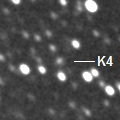
|
Now it is 15.3 mag (Sept. 18, Yuji Ohshima). It stays 16 mag for a long time until summer in 2018. In the Southern Hemisphere, it stays observable in excellent condition until autumn. It locates low in the Northern Hemisphere.
Date(TT) R.A. (2000) Decl. Delta r Elong. m1 Best Time(A, h)
Oct. 28 18 17.35 -25 10.3 3.114 2.745 59 15.9 18:35 ( 39, 18)
Nov. 4 18 29.47 -24 30.5 3.169 2.727 55 15.9 18:29 ( 41, 18)
|

|
Appearing in the morning sky. It will be observable at 15 mag in good condition from winter to spring.
Date(TT) R.A. (2000) Decl. Delta r Elong. m1 Best Time(A, h)
Oct. 28 11 4.19 11 58.4 4.072 3.551 52 16.1 4:52 (280, 34)
Nov. 4 11 11.70 11 21.5 3.986 3.549 57 16.0 4:57 (285, 39)
|

|
Now it is 16.6 mag (Oct. 11, Catalina Sky Survey). It will approach to Earth down to 0.2 a.u., and to Sun down to 0.6 a.u., and it is expected to brighten up to 9 mag from winter to spring. In the Northern Hemisphre, it stays observable in good condition until January, but it will be extremely low after that. In the Southern Hemisphere, it is not observable from January to mid March, but it stays observable in good condition except for that period.
Date(TT) R.A. (2000) Decl. Delta r Elong. m1 Best Time(A, h)
Oct. 28 8 39.58 -4 17.2 2.101 2.189 81 16.5 4:52 (329, 46)
Nov. 4 8 44.48 -4 11.7 1.893 2.090 86 16.1 4:57 (339, 49)
|

|
Appearing in the morning sky. It stays 16-17 mag for a long time from 2016 to 2019. It stays near by the equator.
Date(TT) R.A. (2000) Decl. Delta r Elong. m1 Best Time(A, h)
Oct. 28 10 23.15 4 19.5 10.039 9.560 58 16.1 4:52 (295, 37)
Nov. 4 10 25.51 4 11.7 9.937 9.561 65 16.1 4:57 (302, 43)
|
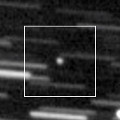
|
Now it is 17.5 mag (Oct. 14, Jean-Francois Soulier). It will approach to Earth down to 0.07 a.u. in mid December, and it will brighten up to 10 mag. In the Northern Hemisphere, it stays observable in excellent condition until mid December. In the Southern Hemisphere, it stays low.
Date(TT) R.A. (2000) Decl. Delta r Elong. m1 Best Time(A, h)
Oct. 28 6 58.15 34 16.2 0.997 1.649 111 16.8 4:33 ( 0, 89)
Nov. 4 7 2.86 34 39.9 0.850 1.577 117 16.3 4:10 ( 0, 90)
|

|
Now it is 16.1 mag (Sept. 27, Mt. Lemmon Survey). Return of a new periodic comet which brightened up to 13 mag in 2004. It will be observable in excellent condition in autumn. It was expected to brighten up to 14 mag, if the comet is as bright as when it was discovered. But actually, it is much fainter than expected.
Date(TT) R.A. (2000) Decl. Delta r Elong. m1 Best Time(A, h)
Oct. 28 2 34.23 7 53.2 0.732 1.722 171 16.4 0:10 ( 0, 63)
Nov. 4 2 28.83 9 12.0 0.739 1.729 173 16.4 23:33 ( 0, 64)
|
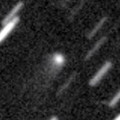
|
It stays 16 mag for a long time from 2017 to 2018. It is observable in excellent condition in the Northern Hemisphere. It locates very low in the Southern Hemisphere.
Date(TT) R.A. (2000) Decl. Delta r Elong. m1 Best Time(A, h)
Oct. 28 9 17.60 22 13.2 5.421 5.331 79 16.4 4:52 (288, 61)
Nov. 4 9 17.66 23 5.2 5.292 5.330 86 16.4 4:57 (296, 67)
|
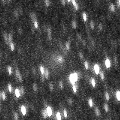
|
It brightened up to 13.5 mag in July (July 5, Chris Wyatt). But it is fading after that, even before the perihelion passage. It has already faded down to 15.9 mag (Sept. 11, Alexander Baransky). It is observable in excellent condition in the Southern Hemisphere. It locates somewhat low in the Northern Hemisphere.
Date(TT) R.A. (2000) Decl. Delta r Elong. m1 Best Time(A, h)
Oct. 28 20 8.56 -16 14.2 1.802 2.001 86 16.5 18:35 ( 16, 37)
Nov. 4 20 21.21 -15 9.9 1.881 2.008 82 16.7 18:29 ( 19, 38)
|

|
Now it is 17.7 mag (Sept. 30, Catalina Sky Survey). It stays observable at 16 mag for a long time until summer in 2018. It is observable in good condition in the Northern Hemisphere in 2017, and in the Southern Hemisphere in 2018.
Date(TT) R.A. (2000) Decl. Delta r Elong. m1 Best Time(A, h)
Oct. 28 6 2.58 59 16.2 1.607 2.241 117 17.0 3:40 (180, 66)
Nov. 4 5 16.34 62 58.7 1.454 2.178 124 16.7 2:27 (180, 62)
|
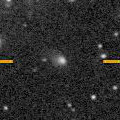
|
Now it is 16.7 mag (Sept. 25, Toshiyuki Takahashi). It is expected to brighten up to 13-14 mag from 2018 to 2019. In the Northern Hemisphere, it stays observable in good condition for a long time. In the Southern Hemisphere, it is not observable until summer in 2018.
Date(TT) R.A. (2000) Decl. Delta r Elong. m1 Best Time(A, h)
Oct. 28 18 27.07 51 36.4 5.188 5.200 85 16.7 18:35 (133, 58)
Nov. 4 18 28.95 49 55.8 5.184 5.154 82 16.7 18:29 (129, 55)
|
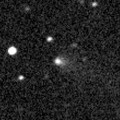
|
First return of a new periodic comet discovered in 2000. Now it is 15.9 mag (Sept. 26, Toshiyuki Takahashi). Although it has been brightening even after the perihelion passage, it will be fading after this.
Date(TT) R.A. (2000) Decl. Delta r Elong. m1 Best Time(A, h)
Oct. 28 0 32.16 -4 11.9 1.847 2.755 150 16.7 22:04 ( 0, 51)
Nov. 4 0 28.63 -3 20.2 1.919 2.778 143 16.9 21:33 ( 0, 52)
|

|
Now it is 17.0 mag (Sept. 26, Alexander Baransky). It will be observable at 16.5 mag in good condition in winter.
Date(TT) R.A. (2000) Decl. Delta r Elong. m1 Best Time(A, h)
Oct. 28 9 21.99 3 55.0 2.817 2.703 73 16.8 4:52 (310, 48)
Nov. 4 9 29.72 2 10.2 2.750 2.718 77 16.7 4:57 (319, 50)
|

|
Now it is 16.5 mag (Sept. 26, ATLAS-MLO, Mauna Loa). It stays 16 mag from 2016 to 2017. In the Northern Hemisphere, it stays observable in good condition for a long time. In the Southern Hemisphere, it will never be observable again.
Date(TT) R.A. (2000) Decl. Delta r Elong. m1 Best Time(A, h)
Oct. 28 18 16.54 60 12.3 6.578 6.620 88 16.8 18:35 (146, 53)
Nov. 4 18 23.90 59 48.7 6.598 6.636 87 16.8 18:29 (145, 52)
|

|
Now it is 16.5 mag (Sept. 28, Alexander Baransky). In the Northern Hemisphere, it will be observable at 17 mag in excellent condition from autumn to winter. It locates low in the Southern Hemisphere.
Date(TT) R.A. (2000) Decl. Delta r Elong. m1 Best Time(A, h)
Oct. 28 5 45.03 34 4.9 2.415 3.115 126 16.8 3:21 ( 0, 89)
Nov. 4 5 44.33 34 32.9 2.361 3.130 133 16.8 2:52 ( 0, 90)
|

|
Now it is 18.5 mag (Oct. 21, Jonathan L. Tuten, D. Breedlove, B. Lutkenhoner). Appearing in the morning sky. It will be fading slowly after this.
Date(TT) R.A. (2000) Decl. Delta r Elong. m1 Best Time(A, h)
Oct. 28 11 10.37 -5 28.3 3.062 2.456 44 16.8 4:52 (294, 22)
Nov. 4 11 18.98 -6 33.9 3.048 2.513 49 16.9 4:57 (300, 26)
|

|
Now it is 16.7 mag (Sept. 15, Yuji Ohshima). It will pass the perihelion in 2019. However, it has not been brightening since the discovery in 2010. It is observable in good conditioin in the Northern Hemisphere. It is not observable for a long time in the Southern Hemisphere.
Date(TT) R.A. (2000) Decl. Delta r Elong. m1 Best Time(A, h)
Oct. 28 7 4.03 71 54.3 8.571 8.919 107 16.9 4:40 (180, 53)
Nov. 4 7 4.42 72 37.1 8.496 8.906 111 16.9 4:13 (180, 52)
|

|
Now it is 17.9 mag (June 2, MASTER-OAFA Observatory). It will brighten up to 14 mag from autumn to winter in 2018, and it will be observable in excellent condition in the Northern Hemisphere. In 2017, it is observable at 17 mag in excellent condition in the Southern Hemisphere.
Date(TT) R.A. (2000) Decl. Delta r Elong. m1 Best Time(A, h)
Oct. 28 23 3.53 -42 24.2 3.284 3.744 110 17.1 20:36 ( 0, 13)
Nov. 4 22 59.93 -41 8.0 3.324 3.701 104 17.1 20:05 ( 0, 14)
|
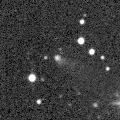
|
Now it is 17.3 mag (Sept. 24, E. Bryssinck). It is observable in good condition in the Northern Hemisphere. It locates very low in the Southern Hemisphere.
Date(TT) R.A. (2000) Decl. Delta r Elong. m1 Best Time(A, h)
Oct. 28 7 25.09 34 23.2 2.635 3.065 106 17.2 4:52 (290, 88)
Nov. 4 7 27.58 34 43.4 2.569 3.089 112 17.1 4:35 ( 0, 90)
|
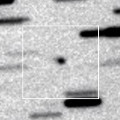
|
It stays observable at 18 mag for a long time until 2019.
Date(TT) R.A. (2000) Decl. Delta r Elong. m1 Best Time(A, h)
Oct. 28 6 59.96 20 1.7 7.607 8.007 110 17.9 4:35 ( 0, 75)
Nov. 4 6 56.57 19 49.7 7.485 8.002 118 17.9 4:04 ( 0, 75)
|

|
Possible first interstellar object in the history. It approached to Sun down to 0.25 a.u. on Sept. 9. Now it is fading rapidly. It was 19.0 mag in mid October (Oct. 14, Catalina Sky Survey). But it has already fade down to 21.7 mag (Oct. 26, Sutherland-LCO C).
Date(TT) R.A. (2000) Decl. Delta r Elong. m1 Best Time(A, h)
Oct. 28 23 54.32 5 3.9 0.496 1.431 145 22.1 21:24 ( 0, 60)
Nov. 4 23 31.41 5 37.7 0.740 1.595 133 23.4 20:35 ( 0, 61)
|
|
![]()
 C/2014 B1 ( Schwartz )
C/2014 B1 ( Schwartz ) (3200) Phaethon
(3200) Phaethon 355P/2017 M2 ( LINEAR-NEAT )
355P/2017 M2 ( LINEAR-NEAT ) C/2016 A1 ( PanSTARRS )
C/2016 A1 ( PanSTARRS ) 213P/Van Ness
213P/Van Ness C/2017 S6 ( Catalina )
C/2017 S6 ( Catalina ) C/2017 M4 ( ATLAS )
C/2017 M4 ( ATLAS ) 352P/2017 L1 ( Skiff )
352P/2017 L1 ( Skiff ) C/2016 T3 ( PanSTARRS )
C/2016 T3 ( PanSTARRS ) C/2014 OE4 ( PanSTARRS )
C/2014 OE4 ( PanSTARRS ) 90P/Gehrels 1
90P/Gehrels 1 103P/Hartley 2
103P/Hartley 2 C/2010 U3 ( Boattini )
C/2010 U3 ( Boattini ) (944) Hidalgo
(944) Hidalgo 188P/LINEAR-Mueller
188P/LINEAR-Mueller C/2015 XY1 ( Lemmon )
C/2015 XY1 ( Lemmon ) A/2017 U1
A/2017 U1![]()




































